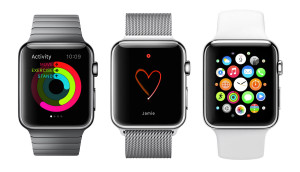 9to5Mac continues to have deep coverage of exactly how Apple plans to sell the Watch, treading the fine line between selling a few-size-fits-all product like an iMac or iPhone to something that’s more customized and personal. We do wonder, though, if all this fuss is a short-term thing.
9to5Mac continues to have deep coverage of exactly how Apple plans to sell the Watch, treading the fine line between selling a few-size-fits-all product like an iMac or iPhone to something that’s more customized and personal. We do wonder, though, if all this fuss is a short-term thing.
Think about it: an iPhone 6 comes in two styles (regular and Plus), three colors, three memory sizes, and five carriers (including unlocked). That’s a lot of complexity, not to mention the sales help required to get a phone provisioned and set up. And if you’ve ever spent time with an Apple sales rep, you’ll know that the consultive sales process is something they’re already very comfortable with.
The watch, on the other hand, also comes in two styles (let’s forget for a moment about the very low-volume gold Edition), each with just two sizes. There are 12 interchangeable bands, and not all bands come in both sizes. That’s a much simpler product matrix, and the prices are closer to iPod and iPhone prices than iPad or iMacs. It’s overstating it to say that these are goods that could be put on peg racks like iPad covers or Time Machines (which cost the same as entry level Watches), but not by much. Compared to an iPhone sale, or helping a customer decide between sizes of iPads or MacBook Airs, this is simple.
The Edition, gold, version is different; if you’re asking someone to spend $10,000 on a luxury device, it’s reasonable to invest time and a lot of stroking into an exclusive sales process. Hour-long sales appointments, special private sales areas, limited stores, qualifying customers, magic tables, purring unicorns — all that is fine.
But all the fuss over how stores are going to retrofitted to accommodate a new device that tops out at $1000? In less than a year, maybe as soon as supply stops being constrained, we think there’ll be no appointments, no deep consultive style consultations. It’ll be like buying an iPod. No big thing.